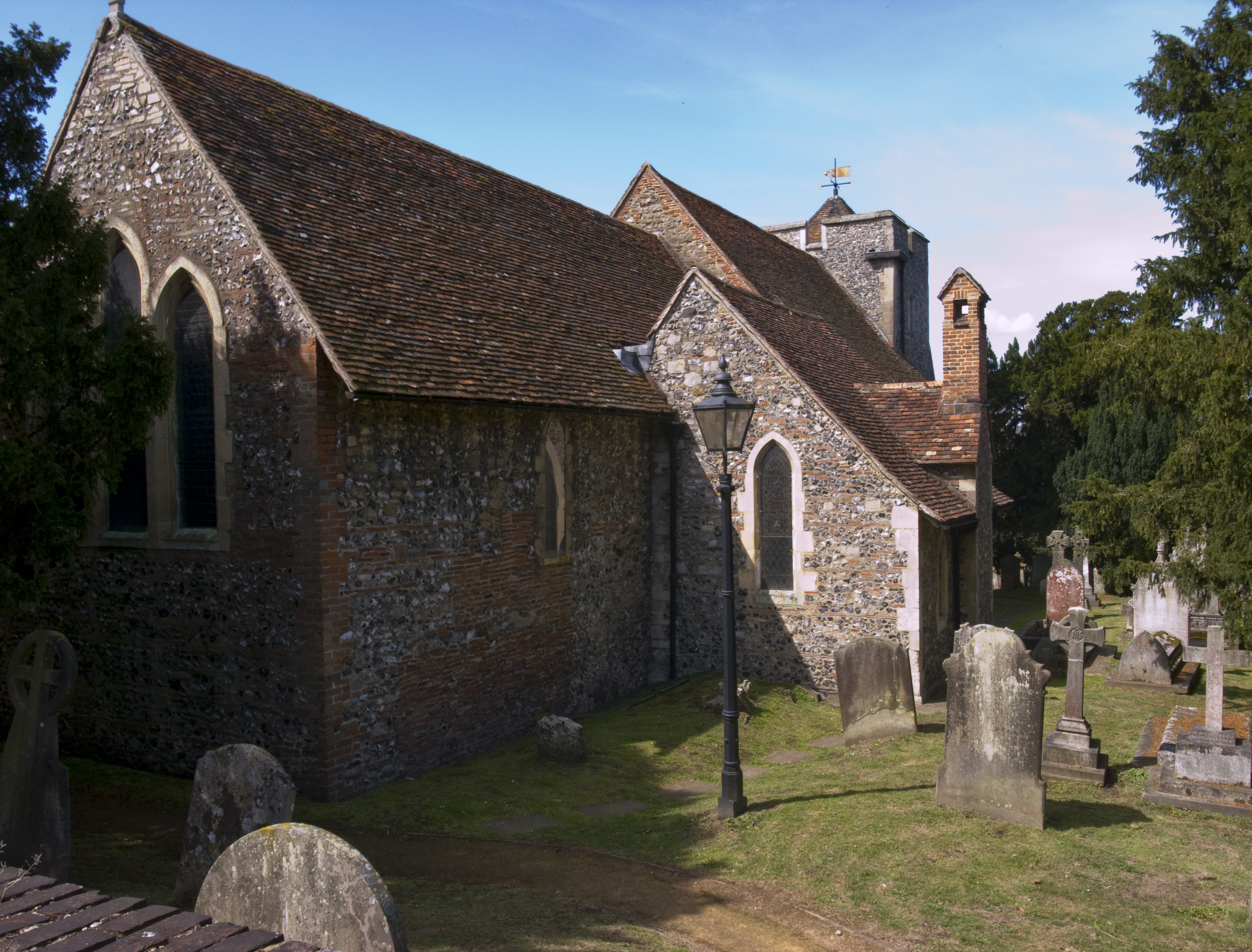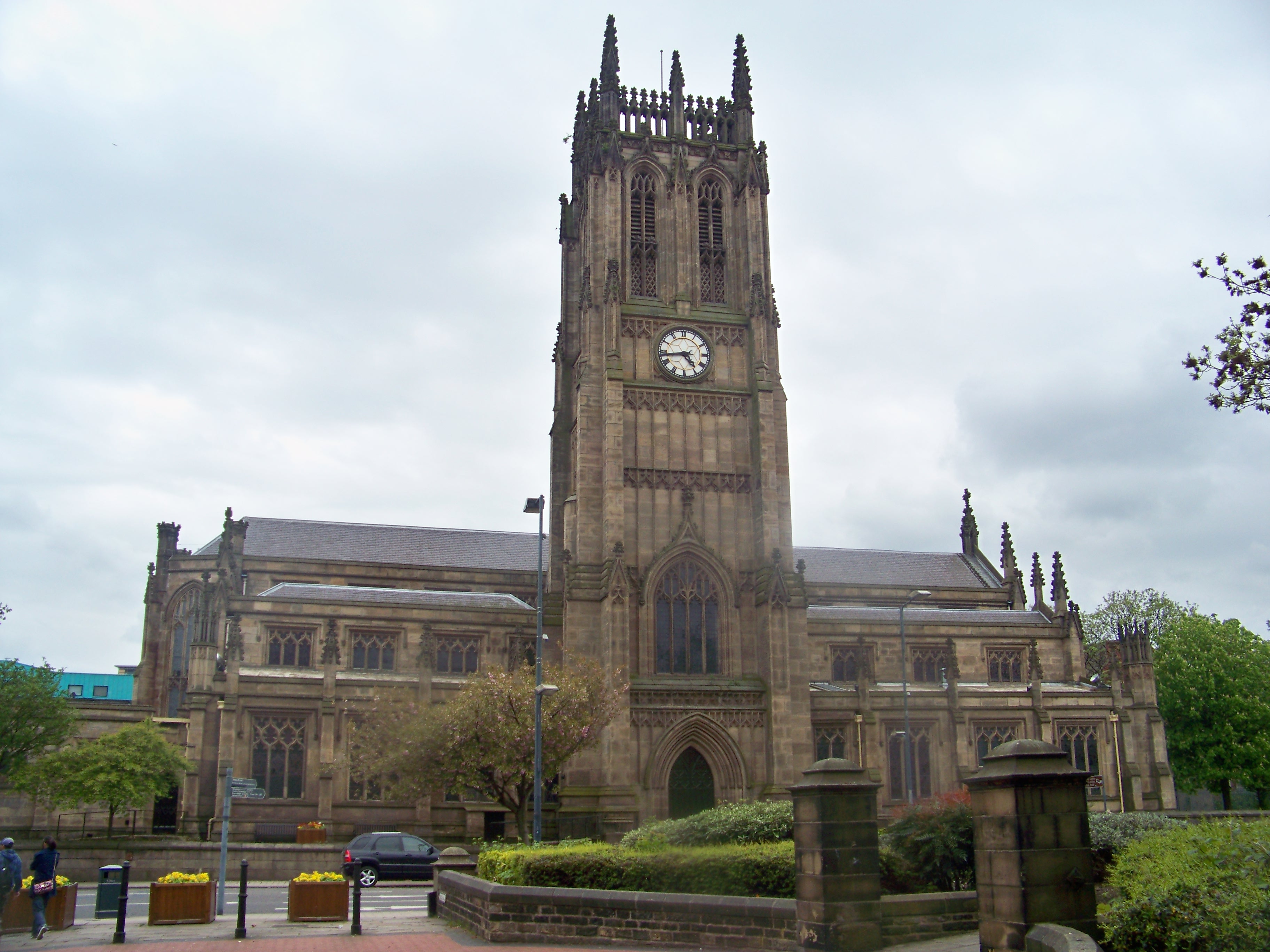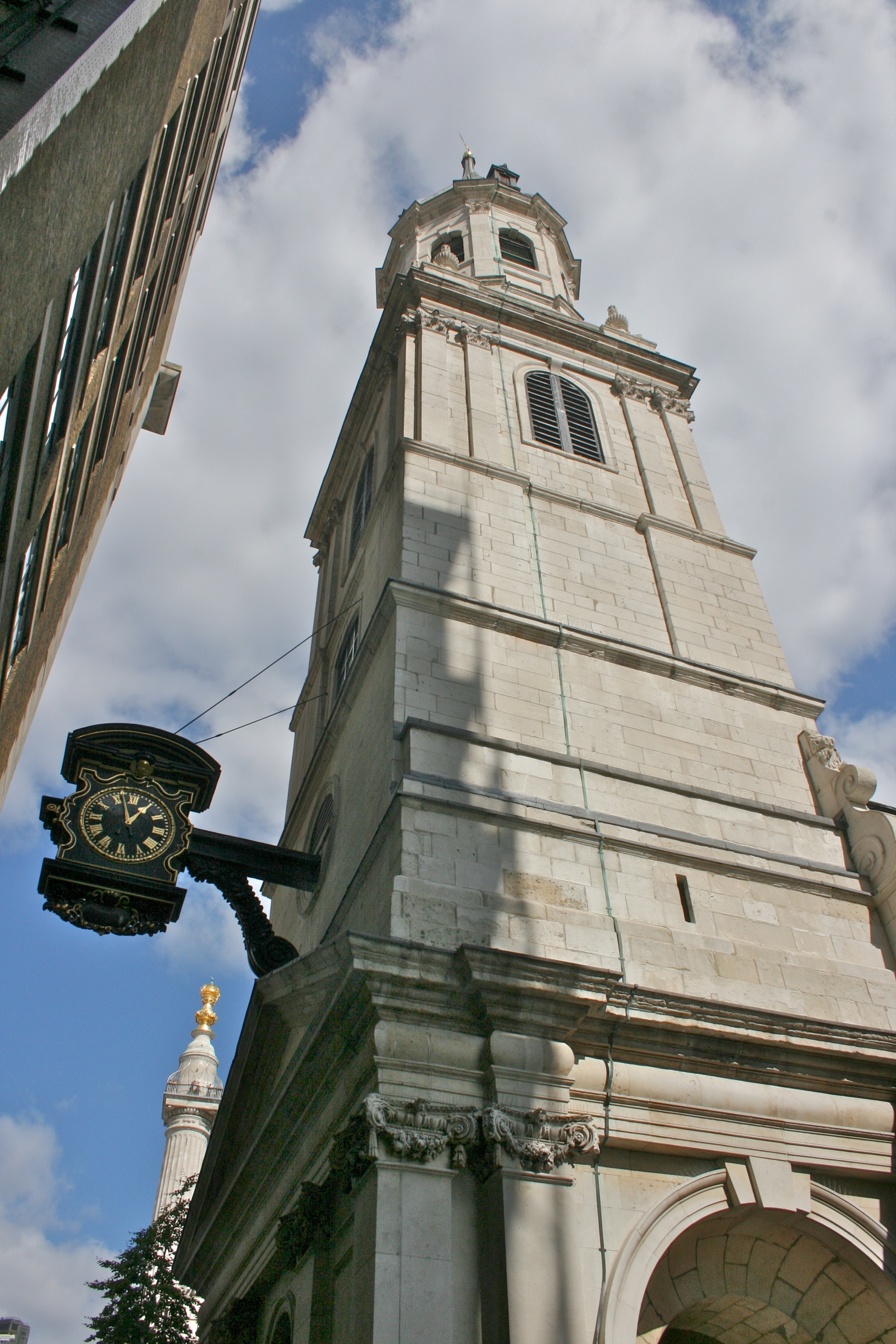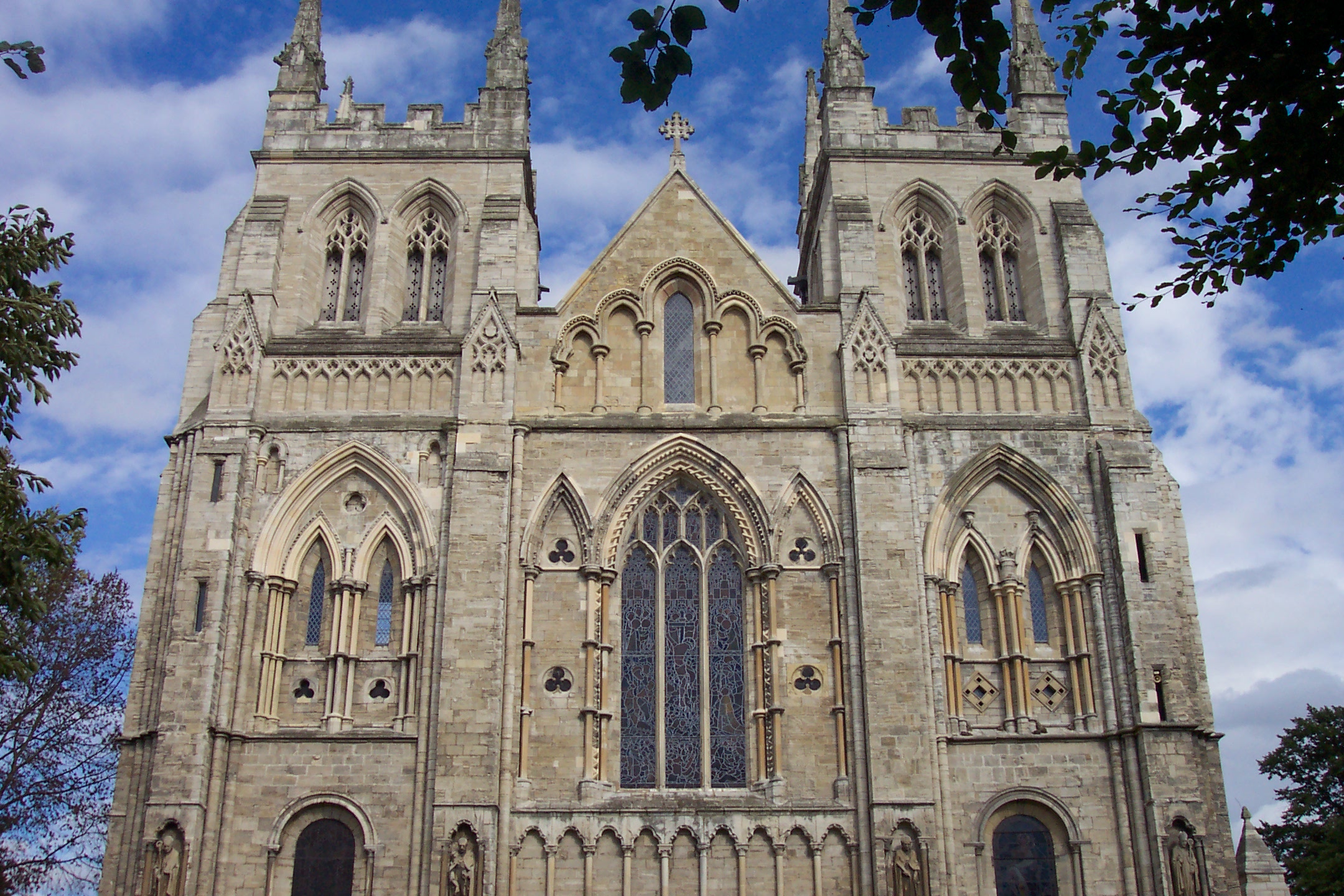Anglican parish church on:
[Wikipedia]
[Google]
[Amazon]
A
Lichfield Diocese





 This is a very incomplete list of notable Church of England parish churches:
This is a very incomplete list of notable Church of England parish churches:
''The Ground Plan of the English Parish Church''
by A. Hamilton Thompson
Church of England websiteFind a Church in the Church of England ("A Church Near You")Historical resources on the Church of England
{{England topics Types of Christian organization Types of church buildings
parish church
A parish church (or parochial church) in Christianity is the church which acts as the religious centre of a parish. In many parts of the world, especially in rural areas, the parish church may play a significant role in community activities, ...
in the Church of England
The Church of England (C of E) is the established Christian church in England and the mother church of the international Anglican Communion. It traces its history to the Christian church recorded as existing in the Roman province of Britai ...
is the church which acts as the religious centre for the people within each Church of England parish (the smallest and most basic Church of England administrative unit; since the 19th century sometimes called the ecclesiastical parish
A parish is a territorial entity in many Christian denominations, constituting a division within a diocese. A parish is under the pastoral care and clerical jurisdiction of a priest, often termed a parish priest, who might be assisted by one or m ...
, to avoid confusion with the civil parish
In England, a civil parish is a type of administrative parish used for local government. It is a territorial designation which is the lowest tier of local government below districts and counties, or their combined form, the unitary authorit ...
which many towns and villages have).
Parishes in England
In England, there are parish churches for both the Church of England and theRoman Catholic Church
The Catholic Church, also known as the Roman Catholic Church, is the largest Christian church, with 1.3 billion baptized Catholics worldwide . It is among the world's oldest and largest international institutions, and has played a ...
. References to a "parish church", without mention of a denomination, will, however, usually be to those of the Church of England due to its status as the Established Church. This is generally true also for Wales
Wales ( cy, Cymru ) is a country that is part of the United Kingdom. It is bordered by England to the east, the Irish Sea to the north and west, the Celtic Sea to the south west and the Bristol Channel to the south. It had a population in ...
, although the Church in Wales
The Church in Wales ( cy, Yr Eglwys yng Nghymru) is an Anglican church in Wales, composed of six dioceses.
The Archbishop of Wales does not have a fixed archiepiscopal see, but serves concurrently as one of the six diocesan bishops. The p ...
is dis-established.
The Church of England is made up of parishes, each one forming part of a diocese
In church governance, a diocese or bishopric is the ecclesiastical district under the jurisdiction of a bishop.
History
In the later organization of the Roman Empire, the increasingly subdivided provinces were administratively associa ...
. Almost every part of England is within both a parish and a diocese (there are very few non-parochial areas and some parishes not in dioceses). These ecclesiastical parishes are often no longer the same as the civil parish
In England, a civil parish is a type of administrative parish used for local government. It is a territorial designation which is the lowest tier of local government below districts and counties, or their combined form, the unitary authorit ...
es in local government. Larger towns and cities, even those with cathedrals, still have ecclesiastical parishes and parish churches.
Each parish is ministered to by a parish priest
A parish is a territorial entity in many Christian denominations, constituting a division within a diocese. A parish is under the pastoral care and clerical jurisdiction of a priest, often termed a parish priest, who might be assisted by one or ...
, usually called a vicar
A vicar (; Latin: '' vicarius'') is a representative, deputy or substitute; anyone acting "in the person of" or agent for a superior (compare "vicarious" in the sense of "at second hand"). Linguistically, ''vicar'' is cognate with the English pre ...
, rector
Rector (Latin for the member of a vessel's crew who steers) may refer to:
Style or title
*Rector (ecclesiastical), a cleric who functions as an administrative leader in some Christian denominations
*Rector (academia), a senior official in an edu ...
or priest-in-charge. More rarely the parish priest is known as a "perpetual curate". In one instance only the priest is also, by historical custom, officially known as an " archpriest". Each parish usually has one active parish church
A parish church (or parochial church) in Christianity is the church which acts as the religious centre of a parish. In many parts of the world, especially in rural areas, the parish church may play a significant role in community activities, ...
, though rarely and historically more than one; if there is no parish church, the bishop will usually license another building and may designate it as a Parish Centre of Worship A Parish Centre of Worship is a church or other building licensed as such by the diocesan bishop in the Church of England, usually where there is no parish church. For most purposes it is deemed to be a parish church but it is dedicated, not consecr ...
. A parish may also be served by a number of chapels of ease
A chapel of ease (or chapel-of-ease) is a church building other than the parish church, built within the bounds of a parish for the attendance of those who cannot reach the parish church conveniently.
Often a chapel of ease is deliberately bu ...
. Unused ' redundant' parish churches may exist in parishes formed by the merging of two or more parishes, or because of the cost of upkeep. These redundant churches may survive as ruins, remain empty, or be converted for alternative uses.
Character
Church of England
The Church of England (C of E) is the established Christian church in England and the mother church of the international Anglican Communion. It traces its history to the Christian church recorded as existing in the Roman province of Britai ...
parish churches include some of the oldest churches to be found in England, often built before the 16th-century reformation
The Reformation (alternatively named the Protestant Reformation or the European Reformation) was a major movement within Western Christianity in 16th-century Europe that posed a religious and political challenge to the Catholic Church and in ...
, and thus predating the division of Western Christianity
Western Christianity is one of two sub-divisions of Christianity ( Eastern Christianity being the other). Western Christianity is composed of the Latin Church and Western Protestantism, together with their offshoots such as the Old Catholic ...
. A number are substantially of Anglo-Saxon date, and all subsequent periods of architecture are represented in the country. Most parishes have churches that date back to the Middle Ages
In the history of Europe, the Middle Ages or medieval period lasted approximately from the late 5th to the late 15th centuries, similar to the post-classical period of global history. It began with the fall of the Western Roman Empire ...
, though often with many later additions or alterations. The parish churches of the City of London are particularly famous for their Baroque architecture. Each building reflects its status and there is considerable variety in the size and style of parish churches. Some very large former monastic
Monasticism (from Ancient Greek , , from , , 'alone'), also referred to as monachism, or monkhood, is a religion, religious way of life in which one renounces world (theology), worldly pursuits to devote oneself fully to spiritual work. Monastic ...
or collegiate church In Christianity, a collegiate church is a church where the daily office of worship is maintained by a college of canons: a non-monastic or "secular" community of clergy, organised as a self-governing corporate body, which may be presided over by ...
es are now parish churches, not always in their complete original form. As well as their architecture, many Church of England parish churches are known for their interesting and beautiful church fittings which are often remarkable survivals. These may include monuments
A monument is a type of structure that was explicitly created to commemorate a person or event, or which has become relevant to a social group as a part of their remembrance of historic times or cultural heritage, due to its artistic, hist ...
, hatchments, wall painting
A mural is any piece of graphic artwork that is painted or applied directly to a wall, ceiling or other permanent substrate. Mural techniques include fresco, mosaic, graffiti and marouflage.
Word mural in art
The word ''mural'' is a Spanish ...
s, stained glass, floor tiles
Tiles are usually thin, square or rectangular coverings manufactured from hard-wearing material such as ceramic, Rock (geology), stone, metal, baked clay, or even glass. They are generally fixed in place in an array to cover roofs, floors, wa ...
, carved pew
A pew () is a long bench seat or enclosed box, used for seating members of a congregation or choir in a church, synagogue or sometimes a courtroom.
Overview
The first backless stone benches began to appear in English churches in the thirt ...
s, choir stall
A choir, also sometimes called quire, is the area of a church or cathedral that provides seating for the clergy and church choir. It is in the western part of the chancel, between the nave and the sanctuary, which houses the altar and Church tab ...
s (perhaps with misericord
A misericord (sometimes named mercy seat, like the biblical object) is a small wooden structure formed on the underside of a folding seat in a church which, when the seat is folded up, is intended to act as a shelf to support a person in a par ...
s), lectern
A lectern is a reading desk with a slanted top, on which documents or books are placed as support for reading aloud, as in a scripture reading, lecture, or sermon. A lectern is usually attached to a stand or affixed to some other form of support. ...
s and fonts, sometimes even shrine
A shrine ( la, scrinium "case or chest for books or papers"; Old French: ''escrin'' "box or case") is a sacred or holy space dedicated to a specific deity, ancestor, hero, martyr, saint, daemon, or similar figure of respect, wherein they ...
s or vestment
Vestments are liturgical garments and articles associated primarily with the Christian religion, especially by Eastern Churches, Catholics (of all rites), Anglicans, and Lutherans. Many other groups also make use of liturgical garments; this ...
s.
The Church of England parish church was always fundamental to the life of every community, especially in rural areas. However, by the late 20th and early 21st centuries, with the decline in the number of worshippers and the shortage
In economics, a shortage or excess demand is a situation in which the demand for a product or service exceeds its supply in a market. It is the opposite of an excess supply ( surplus).
Definitions
In a perfect market (one that matches a si ...
of Anglican priests, there has been a trend towards team or shared ministries, and many parish churches no longer have a service every Sunday.
Notable parish churches




 This is a very incomplete list of notable Church of England parish churches:
This is a very incomplete list of notable Church of England parish churches:
See also
*Churches Conservation Trust
The Churches Conservation Trust is a registered charity whose purpose is to protect historic churches at risk in England. The charity cares for over 350 churches of architectural, cultural and historic significance, which have been transferred in ...
*Historical development of Church of England dioceses
This article traces the historical development of the dioceses and cathedrals of the Church of England. It is customary in England to name each diocese after the city where its cathedral is located. Occasionally, when the bishop's seat has been ...
*Architecture of the medieval cathedrals of England
The medieval cathedrals of England, which date from between approximately 1040 and 1540, are a group of twenty-six buildings that constitute a major aspect of the country's artistic heritage and are among the most significant material symbols of ...
* Stained glass - British glass, 1811-1918
*Greater Churches Group
The Major Churches Network, founded in 1991 as the Greater Churches Network, is a group of Church of England parish churches defined as having exceptional significance, being physically very large (over 1000m2 footprint), listed as Grade I, II* ( ...
References
* * *External links
''The Ground Plan of the English Parish Church''
by A. Hamilton Thompson
Church of England website
{{England topics Types of Christian organization Types of church buildings